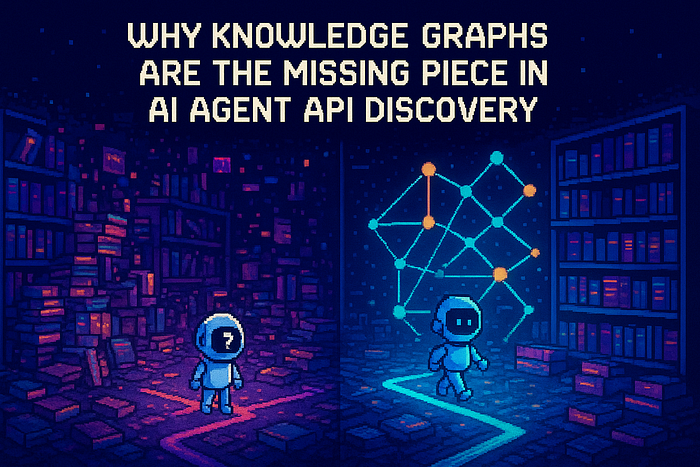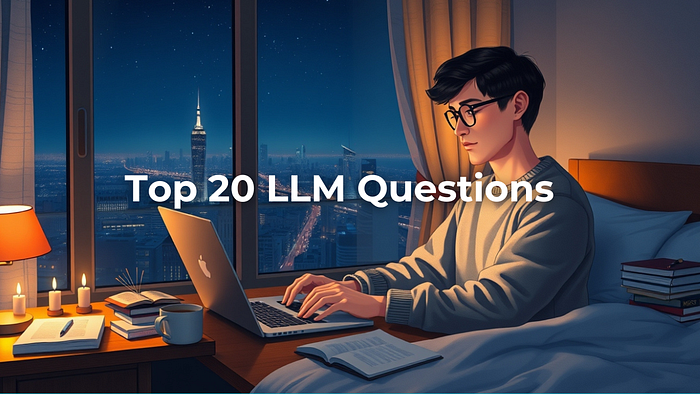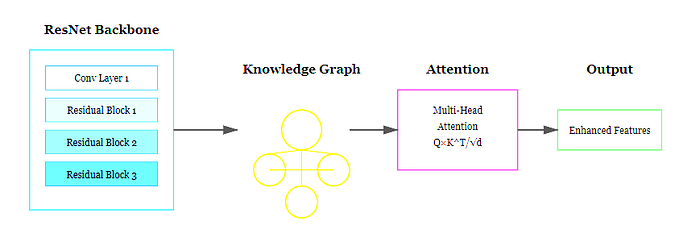DeepSeek R1: Is It Right For You? (A Practical Self‑Assessment for Businesses and Individuals)
Last Updated on January 28, 2025 by Editorial Team
Author(s): Alden Do Rosario
Originally published on Towards AI.
DeepSeek R1: Is It Right For You? (A Practical Self‑Assessment for Businesses and Individuals)
Deepseek just turned the AI world upside down with its new R1 model. It’s all over the news, so I won’t repeat it here.But then, the fears too are justified — as laid out nicely by Jim the AI Whisperer .
AI as political warfare: DeepSeek AI advances the global interests of the Communist Party of China
Censorship, propaganda, and socialist intrigue in the AI’s System Instructions — and a chatbot that secretly wants to…
medium.com
For example, here is part of the model’s system instructions (laden with Chinese govt interference) extracted by Jim.
If you’re weighing whether to adopt DeepSeek R1 for personal or business objectives, it’s worthwhile to assess its strengths and concerns against your own needs, values, and requirements.
Below is a self‑assessment framework you can use to determine whether DeepSeek R1 might be right for you.
1. Use Case Clarity: What Do You Want from an AI?
- Content Generation & Creative Work
- Potential Benefits: DeepSeek R1’s advanced language modeling capabilities are reportedly strong. If your goal is to produce compelling marketing copy, draft articles, or generate creative content, you might find an upside in the model’s robust generative power.
- Potential Drawbacks: Some content categories may be censored or skewed by built‑in political or ideological constraints. If you rely on producing uncensored analysis or commentary (especially on certain social or political topics), you might find the outputs constrained.
- Key Questions: Are you looking for an AI that can handle politically sensitive or regulated topics? Or do you primarily need general, apolitical copy?
2. Customer Support & Chatbot Integration
- Potential Benefits: A model with strong, human‑like conversation skills can offer 24/7 customer assistance, handle routine inquiries, and streamline support.
- Potential Drawbacks: If your brand or organization operates globally, you might worry about built‑in filters or ideological stances that clash with your corporate values, especially if customers raise sensitive questions.
- Key Questions: Will you be comfortable with possible “official” or heavily filtered replies from your chatbot? Are you willing to monitor or post‑process the AI’s responses to keep them aligned with your business policies?
3. Business Intelligence & Research
- Potential Benefits: DeepSeek’s underlying engine appears to handle advanced reasoning tasks well, potentially excelling in summarizing business data, generating data insights, or providing research assistance.
- Potential Drawbacks: If certain lines of inquiry are restricted by the model’s core alignment, your research may be unintentionally narrowed — particularly on controversial or geopolitically sensitive areas.
- Key Questions: Does your team rely on neutral, unfiltered access to analyses (especially on internationally relevant topics)? Do you need an AI unencumbered by potential ideological stances?
2. Data Governance & Privacy: How Is Your Data Handled?
1. Data Sharing & Sovereignty
- Potential Benefits: DeepSeek R1 may offer attractive hosting options or local‑running instances that keep data in your environment. This is appealing for teams that want more direct control over the AI.
- Potential Drawbacks: If the model’s underlying infrastructure is physically or contractually tied to government data centers (as hinted by some references), there are open questions about the ultimate destination or usage of your prompts and data.
- Key Questions: Do you have strict data sovereignty requirements or compliance obligations that could conflict with DeepSeek’s data storage or transfer policies? Does your organization have the legal capacity to evaluate the model’s compliance with international privacy standards?
2. Security & Encryption
- Potential Benefits: Advanced security protocols might be in place — there are mentions of quantum encryption or sophisticated channels. If you can verify this, it may be a plus for high‑sensitivity use cases.
- Potential Drawbacks: Security claims still need to be audited or validated by independent experts. If your sector is highly regulated (finance, healthcare, government), you need a clear chain of trust for your data.
- Key Questions: Are you comfortable accepting vendor claims of security at face value, or can you audit them? Does your IT security framework allow for third‑party solutions with unknown overseas ties?
3. Content Authenticity & Ethical Considerations
1. Risk of Political or Ideological Bias
- Potential Benefits: Not all usage scenarios will trigger political or ideological issues. For straightforward tasks (like summarizing internal documents or providing coding help), the system’s underlying censorship might never surface.
- Potential Drawbacks: If you or your audience values unfettered discussion of any topic, embedded content restrictions could undermine trust. Moreover, bias in the model’s worldview might seep into subtle but important ways in brand messaging or public‑facing content.
- Key Questions: Does your brand want to maintain a neutral or independent stance? Could your customers perceive biased or censored outputs as negative, damaging your reputation?
2. Regulatory and Reputational Exposure
- Potential Benefits: If you’re operating in a domain where the Chinese market is strategic, using a model aligned with its policies might align you with local regulations.
- Potential Drawbacks: If your home market or internal policies strongly oppose censorship, or if you must uphold strict standards of freedom of expression, adopting a model with visible or hidden ideological constraints can bring negative PR.
- Key Questions: Will your stakeholders or clients question your choice if the AI is discovered to have internal “red lines”? Are you comfortable explaining these constraints in board meetings or to the public?
4. Technical Versatility & Adaptability
1. Integration & Customization
- Potential Benefits: If DeepSeek R1’s architecture supports customization or fine‑tuning for your in‑house tasks, you may gain advanced capabilities for specialized domains like finance, manufacturing, or biotech.
- Potential Drawbacks: The ability to “jailbreak” or circumvent censorship reveals an internal conflict in the model’s architecture. This raises questions about reliability: might your integrated solution unexpectedly refuse or alter outputs under certain prompts?
- Key Questions: How flexible is DeepSeek’s model? Does the vendor share documentation that details the model’s constraints or “break points”? Will you have a fallback method if you need a second model for sensitive tasks?
2. Scalability & Performance
- Potential Benefits: Early reports suggest strong performance on reasoning tasks and the potential for quick model updates. At a fraction of the cost.
- Potential Drawbacks: The official update cycle references “biweekly retraining with new data.” This continuous feed might help keep it fresh, but it might also unpredictably alter its alignment or responses.
- Key Questions: Do you need a stable environment for your AI integration (with predictable update cadences)? Or do you benefit from an aggressively updated system?
5. Cultural, Ethical, and Operational Alignment
1. Cultural Fit:
- If your personal or organizational values prioritize open discourse, you’ll want to scrutinize any hidden constraints. However, if your day‑to‑day usage does not brush against politically sensitive topics, these constraints may never surface.
Governance & Risk Appetite:
- Some organizations have robust compliance frameworks requiring thorough vendor risk assessments. If that’s you, factor in the possibility of state or party influence on the model’s outputs.
Legal Environment:
- The question of potential oversight or intervention by non‑domestic authorities can raise compliance red flags. For personal use, it’s often less of a concern — though still worth considering if you’re using it on sensitive topics.
6. Decision Summary: Is DeepSeek R1 Right for You?
- Personal/Hobbyist Use:
If you’re casually experimenting with AI to write short stories or answer day‑to‑day queries and you have no inclination to discuss sensitive socio‑political topics, DeepSeek R1 might offer advanced capabilities at little or no cost. You’ll want to keep an eye on its data handling if you share private information, though. - Small Business / Startups:
If you want to quickly embed AI in customer support, marketing, or research, DeepSeek R1’s performance could be compelling. However, take note of brand image and the possibility that certain user queries might be “restricted.” Potential backlash might arise if your customers discover ideologically censored content. - Enterprise / Regulated Sectors:
For enterprise usage, especially in sectors like finance, healthcare, defense, or media, you’ll want to conduct due diligence. Validate if the model’s data pipeline meets your privacy/security standards, and weigh reputational risk if a foreign government’s ideological constraints are built in. Some organizations may decide the risks are too high. - Public Sector / Government:
Governments that require AI for public‑facing or internal use will look closely at sovereignty, data compliance, and ideological neutrality. If independence from external political influence is critical, you’ll likely seek a different AI model or a more transparent vendor partnership.
7. Action Items and Next Steps
- Pilot in a Sandbox
Test DeepSeek R1 on your own data in a controlled environment. Evaluate censorship triggers and bias in typical use cases before integrating widely. - Conduct a Thorough Risk Assessment
Include legal, security, and compliance teams in your pilot. Identify how potential constraints or hidden influences could harm brand perception or customer trust. - Explore Alternative or Supplementary Models
You might decide to use different models for different tasks — one for general creative tasks and another for sensitive topics. This multi‑model approach can help mitigate the risk that arises from ideological filters. Consider a distilled model (like DeepSeek R1 Distill Llama 70B) that seems to have less censorship and interference built in. - Monitor Vendor Roadmap
If DeepSeek’s leadership can provide clarity on data governance or the possibility of a more neutral “international edition,” it could change your risk profile. Also monitor other vendors that could use the techniques implemented in Deepseek to create new models. - Develop Clear Usage Policies
If you adopt DeepSeek R1, craft internal policies about when and how it’s used, clarifying disclaimers for public‑facing interactions.
Final Thoughts and Takeaways
My thoughts on DeepSeek: the R1 model is shockingly good in response quality and planning — right up until you peek behind the curtain and see the system instructions saturated with overt government influence.
For most businesses outside of China, those censorship and propaganda concerns alone are likely deal-breakers.
Yet, there’s a silver lining: the technical innovations powering DeepSeek’s strong reasoning will almost certainly appear in other models — minus the political constraints.
Moreover, DeepSeek’s distilled version (which leverages LLaMA) is reportedly free from many of these problematic instructions and still offers robust capabilities. (Hint: Searching for “tank man” in this model provides a clear response — whereas it is blocked in the original model)
Have you tested DeepSeek R1 yet, or are you planning to? Share your experiences below. Let’s keep the conversation going.
Join thousands of data leaders on the AI newsletter. Join over 80,000 subscribers and keep up to date with the latest developments in AI. From research to projects and ideas. If you are building an AI startup, an AI-related product, or a service, we invite you to consider becoming a sponsor.
Published via Towards AI
Take our 90+ lesson From Beginner to Advanced LLM Developer Certification: From choosing a project to deploying a working product this is the most comprehensive and practical LLM course out there!
Towards AI has published Building LLMs for Production—our 470+ page guide to mastering LLMs with practical projects and expert insights!

Discover Your Dream AI Career at Towards AI Jobs
Towards AI has built a jobs board tailored specifically to Machine Learning and Data Science Jobs and Skills. Our software searches for live AI jobs each hour, labels and categorises them and makes them easily searchable. Explore over 40,000 live jobs today with Towards AI Jobs!
Note: Content contains the views of the contributing authors and not Towards AI.














